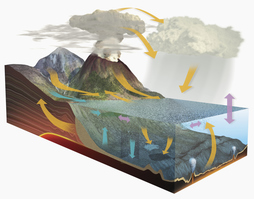But often, both groups become concerned when one or the other makes claims for how to understand the workings of forces and powers in the world. The question of whether or not God is the all-powerful force controlling the world or if natural powers or forces are at work has been debated for many years. Below is a link to a video clip that shows a scene from the movie “Bruce Almighty” that demonstrates this kind of debate. In this clip, Bruce is angry about the events of his life and blames the power and force of God for the outcome. Click on the link below to watch the video.
|
So why do some Christians and some scientists disagree so strongly about how powers and forces work in the world? To help us understand what is at the center of this issue, let’s take a look at the two claims. Click on the tab "The Two Claims," or the button below, to begin. |
Below are two options for using the LEADER GUIDE; the first option contains the information for this page only and the second option contains the entire LEADER GUIDE. |
1 Rolf A. Jacobson, ed., Crazy Talk: A Not-So-Stuffy Dictionary of Theological Terms(Minneapolis: Augsburg, 2008), 92, 86.


